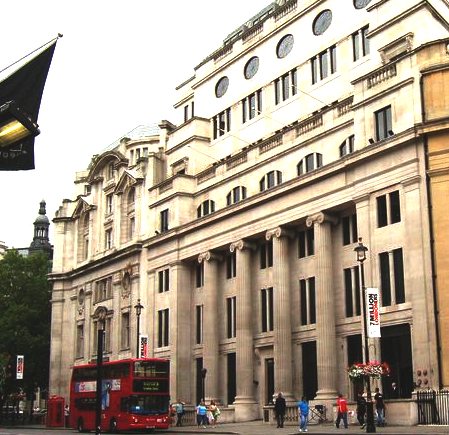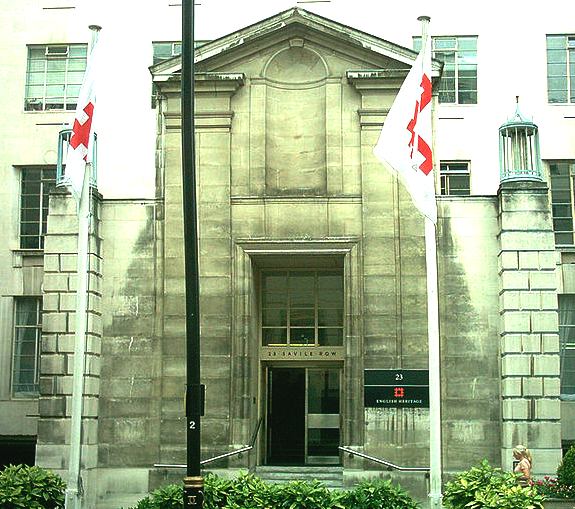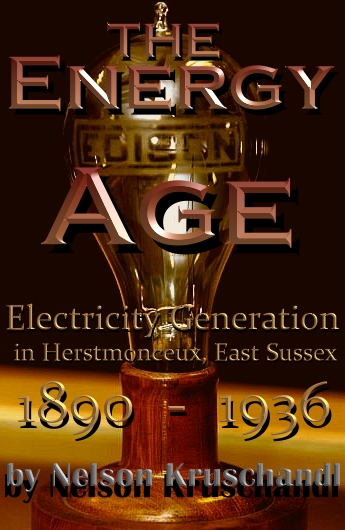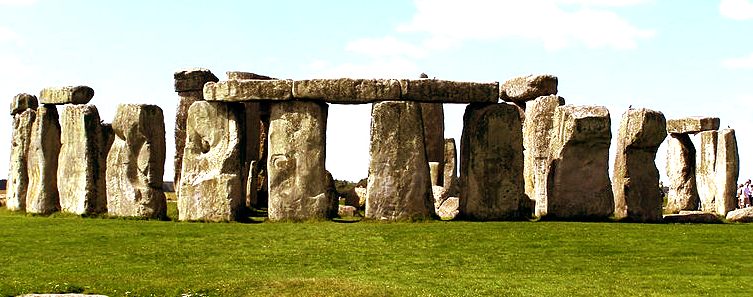|

|
English
Heritage was
created by Parliament in 1984 and charged with the protection of the
historic environment and with promoting public understanding and
enjoyment of it. English Heritage is the Government's official
adviser on all matters concerning heritage conservation, conservation
areas, and the repair of historic buildings.
English
Heritage's principal aims are:
1)
To secure the conservation of England's historic sites, monuments and
buildings.
2)
To promote people's access to, and enjoyment of, this shared heritage.
3)
To raise the understanding and awareness of our heritage to increase
commitment to its protection.
English
Heritage, 23 Savile Row, London, WC1H 1AB
Tel:
+44-171-973-300 Fax: +44-171-973-3001 Email: http://www.eng-h.gov.uk
&
www.english-heritage.org.uk
|
|
In
the matter of conservation and The Old Steam House at Lime
Park in Herstmonceux,
English Heritage's Dr Richard Morrice confirmed the historic find.
The early generating building was immediately included on their 1995 -
2002 Monument Protection Pragramme. Well done Dr Morrice. However, apart from
recommendation, English Heritage are
relatively powerless should any local authority for any reason abandon their
duty to protect the built environment. Hence, if a local authority decide to turn a blind
eye to their responsibility to the historic environment, as frequently
happens when other interests are at stake, valuable historic buildings
may be lost or remain at risk.
Herstmonceux Generating
Works - INDUSTRIAL
ARCHAEOLOGY 
|
|
English Heritage's Archaeology and
Survey Department
The Archaeology and Survey Department is
part of English Heritage's Conservation Department and provides
archaeological expertise and advice to the organization. The Archaeology
and Survey Department consists of three divisions:
-
The Projects Division includes The
Centre for Archaeology which advises on and monitors the
archaeological work funded by English Heritage and which
provides advice and research on archaeological science.
-
The Programmes Division has a number
of functions associated with managing those programmes that
contribute to the greater understanding and appreciation of the
historic environment. The Programmes Division includes such teams as
the Monuments Protection Programme which reviews England's
archaeological resource to determine the most appropriate ways of
managing it for the future.
-
-
The Policy Unit co-ordinates and
supports the development of policy related to the work of the rest
of the department, and in particular to the implementation of EH's
research agenda for archaeology (Exploring Our Past 1998).
Publications and Consultation Documents
Management
of Archaeological Projects (MAP2) The standard reference document
for the planning of archaeological projects is available here in an
online version.
Archaeology
and English Heritage: Agenda for the future The draft Research
Agenda is now available in portable document format (pdf) to read
on-line, print or download.
Monument
Class Descriptions: The Monument Class Description (MCD) is a key
tool, developed and used by the Monuments Protection Programme, in the
evaluation of monuments. To date a group of circa 225 MCDs has
been prepared and one of the aims of their dissemination on the WWW is
to facilitate their expansion, and further enhancement.
MARS
- Monuments At Risk Survey. The English Heritage strategy document
produced in response to the MARS report and further information on the
MARS project.
Frameworks
For our Past. This report summarizes the results of a survey of
research frameworks conducted by English Heritage during 1995. The
Report is now available in portable document format (pdf) to read
on-line, print or download. The reports aims were to identify previous
work and current activity, to list the documents already available and
to analyse these geographically and by content, and to record
perceptions of relevant issues, associated problems, and possible
solutions.
Archaeology
Review The Archaeology Review is
no longer published as an annual publication. Previous reviews are still
available from this page. We are also compiling usage
statistics for the review.
Hypertext
Geophysical Survey Reports. Most surveys undertaken by the
Archaeometry Branch of the AML since 1993 are now available online

Periodically Updated Resources
Archaeology
Commissions - Project Summaries. 2001 project summaries now
available. Background information and a summary of work carried out
on a number of projects funded through the Archaeology Commissions
programme. Links to new projects will be added to the list as WWW
summaries become available.
Environmental
Archaeological Bibliography. An online bibliographic database
containing over 10,000 reports concerned with environmental archaeology.
The reports cover all biological, pedological and geological work on
material from archaeological sites.
The
Geophysical Survey Database. An on line database of information
about geophysical surveys undertaken for archaeological purposes in
England. Presently contains around 2000 entries. For most surveys
undertaken by the Archaeometry Branch of the AML since 1993, hypertext
copies of the reports are available.
Ancient
Monuments Laboratory Latest Available report summaries on line An
on-line version of the most recent issue of our six monthly listing of
AML reports. This lists all reports produced by laboratory staff in the
period covered and incorporates summaries of each report. Publications
by staff during the period are also listed.
Ancient
Technology Section's Scanning Electron Microscope Sample of the Month
Presentations of Archaeology Division Work
World
Heritage Sites and GIS: Introducing the Geographical Information
Systems (GIS) in the management of World Heritage Sites (WHS).
The
Ancient Monuments Laboratory Bar Code Location Recording System A
description of the object location system
Links to other EH pages and independent sites
The
main English Heritage Website. Contains information about the entire
corpus of English Heritage activities.
Links
Page listing other sites of related interest.
|
References:

HISTORY
English Heritage (The Historic Buildings and Monuments Commission for England) is a non-departmental public body which manages the historic built environment of England. Today it is an executive agency of the Department for Culture, Media and Sport (DCMS). The latter was formed in
1997.
Over the centuries, what is now called 'heritage' has been the responsibility of a series of State Departments. There was the 'Kings Works' after the Norman Conquest; the 'Office of Works' (1378-1832); The Office of Woods, Forests, Land Revenues and Works (1832–1851); and the Ministry of Works (1851–1962). Responsibility subsequently transferred to the Ministry of Public Building and Works (1962–1970) then to the Department of the Environment (UK) (1970–1997) and now the
DCMS.
The state's legal responsibility for the historic environment goes back to the Ancient Monuments Protection Act
1882. Central government subsequently developed several systems of heritage protection for different types of 'assets', introducing listing for buildings after WW2 and conservation areas in the 1960s. In 1983 Secretary of State for the Environment Michael Heseltine gave national responsibility for the historic environment to a
semi autonomous agency (or 'quango') to operate under ministerial guidelines and to government policy. The Historic Buildings and Monuments Commission (now known as English Heritage) was
formed.
Since then it has amalgamated with other bodies and archives to become the lead body for the heritage sector.
A national register of historic parks and gardens, (e.g. Rangers House, Greenwich) was set up in
1984, and a register for historic battlefields (e.g. the battle of Tewkesbury) was created in March
1995.
‘Registration’ is a material consideration in the planning process. In April 1999 English Heritage merged with the Royal Commission on the Historical Monuments of England (RCHME) and the National Monuments Record (NMR), bringing together resources for the identification and survey of England’s historic environment. By adoption this included responsibility for the national record of archaeological sites from the Ordnance Survey; the National Library of Aerial Photographs, and two million RAF and Ordnance Survey aerial photographs. These, together with other nationally important external acquisitions, means that English Heritage is one of the largest publicly-accessible archives in the UK: 2.53 million records are available online, including more than 426,000 images. In 2010-2011 it recorded 4.3 million unique online user sessions[9]and over 110,000 people visited NMR exhibitions held around the country in 2009/10. In 2012 the section responsible for archive collections was renamed the English Heritage Archive.
As a result of the National Heritage Act 2002, English Heritage acquired administrative responsibility for historic wrecks and submerged landscapes within 12 miles of the English
coast. The administration of the listed building system was transferred from DCMS to English Heritage in 2006. However, actual listing decisions still remain the responsibility of the Secretary of State for Culture, Media and Sport, who is required by the Planning (Listed Buildings and Conservation Areas) Act 1990 to approve a list of buildings of special architectural or historic interest.
Following the Public Bodies Reform (aka ‘bonfire of the quangos’)in 2010, English Heritage was confirmed as the government's statutory advisor on the historic environment, and the largest source of non-lottery grant funding for heritage
assets. It was retained on grounds of “performing a technical function which should remain independent from Government”.
English Heritage is only one of several of government sponsored organisations with responsibility for the historic
environment. This reflects the length of time that heritage has been legally protected, the number of government reorganisations, and the importance of heritage to the UK economy and society. Local government plays an important role in making conservation decisions locally and keeping local Historic Environment Records
(HERs).
PROPERTIES
English Heritage is the guardian of over 400 sites and monuments, the most famous of which include Stonehenge, Iron Bridge and Dover Castle. Whilst many have an entry charge, more than 250 properties are free to enter including Maiden Castle, Dorset and St Catherine's Oratory.
The properties are part of the portfolio of over 880 sites amassed by the British Government between the 1880s and the 1970s to form the National Collection of built and archaeological heritage. (The balance is in the care of Historic Scotland and CADW.) These sites represent a deliberate attempt by the state in the 19th and early 20th century to take the nation’s most significant prehistoric sites and medieval sites, which were no longer in active use, into public
ownership. This national property collection performs the same function as pictures in the National Gallery and the archaeological material in the British Museum.
Unlike the National Trust, English Heritage holds few furnished properties. New sites are rarely added to the collection as other charities and institutions are now encouraged to care for them and open them to the public.
The properties are held by English Heritage under various arrangements. The majority are in the guardianship of the Secretary of State for the Department for Culture, Media and Sport with the freehold being retained by the owner. The remaining properties are either owned by English Heritage, other government departments or the Crown
Estate.
In 2010-2011 there were 5.5 million visits to staffed properties, an estimated 6 million visits to unstaffed sites and a further 32,340 free educational
visits.
FUNDING
English Heritage is a non-departmental public body, or quango, with most of its funding derived from taxation. In 2010-2011, English Heritage had a total income of £184.7 million. Of this, 70% came from government through grant-in-aid. Earned income of £49.8m accounted for 27% of revenue – £14.3m from property admissions; £12.1m from catering and retail; £18.8m from membership; and £4.7m from other sources. The balance came from donations and
grants.
Following the budget review in October 2010, the Government announcement of a 32% cut to the grant of English Heritage. Since 1997 it has received real terms cuts in its grant-in-aid settlement, resulting in a real terms reduction of £130m
MARITIME HISTORY

GENERAL HISTORY

New
energy drinks for performers
..
Thirst for Life

330ml
Earth can - the World in Your Hands
|





